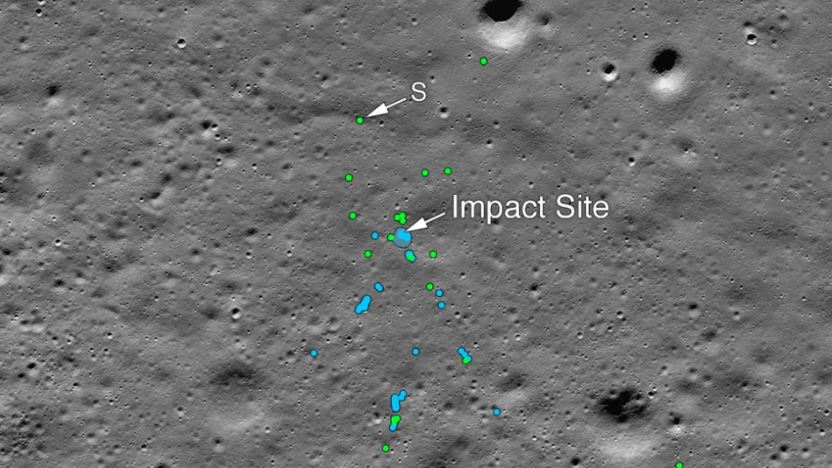
NASA takes cue from Indian space enthusiast, finds Vikram Lander debris

NASA on Tuesday (December 3, Indian time) said that it has found the debris of Vikram Lander of India’s space mission Chandrayaan-2 and released images of its impact site on the Moon, where the spacecraft had lost contact with the control room, seconds before its much-awaited soft landing on the lunar surface on September 7.
The international space agency announced the finding through a tweet.
The #Chandrayaan2 Vikram lander has been found by our @NASAMoon mission, the Lunar Reconnaissance Orbiter. See the first mosaic of the impact site https://t.co/GA3JspCNuh pic.twitter.com/jaW5a63sAf
— NASA (@NASA) December 2, 2019
The images clicked by NASA’s Lunar Reconnaissance Orbiter (LRO) showing the site of impact and the associated debris field was detected with the help of Shanmuga Subramanian, an Indian computer programmer and mechanical engineer.
Also read: India may attempt soft landing on Moon next Nov with Chandrayaan-3
NASA in a statement said of the many space enthusiasts who downloaded and tracked the images released by the Lunar Reconnaissance Orbiter Camera team on September 26, Shanmuga was the first to contact the LRO project team with positive identification of debris. The debris located by Shanmuga is located 750 metres northwest of the main crash site.

“The crash landing of Vikram rekindled an interest in the moon not only for me and others also,” New York Times quoted Shanmuga as saying in an email interaction. “I think even if Vikram had landed and sent some images, we would never had such interest. For the first few days, I was scanning the images randomly and there were a lot of false positives.”
He apprised NASA of his reporting who later confirmed his findings to be accurate after comparing before and after pictures.
Also read: Modi govt can’t get it wrong; even its failures are successes
“When the images for the first mosaic were acquired, the impact point was poorly illuminated and thus not easily identifiable. Two subsequent image sequences were acquired on October 14 and 15 and November 11. The LROC team scoured the surrounding area in these new mosaics and found the impact site and associated debris field. The November mosaic had the best pixel scale and lighting conditions,” NASA said in the statement.
The space agency also released a set of before and after pictures to show the changes on the surface and the impact point.
The Chandrayaan-2 mission which was initiated in July, would have made India the fourth in the world after the United States, Russia, and regional rival China to make a successful Moon landing and the first on the lunar south pole. The main spacecraft, which remains in orbit around the Moon, dropped the unmanned lander Vikram for a descent that would take five days, but the probe went silent just 2.1 km above the surface. Days after the failed landing, the Indian Space Research Organization said it had located the lander, but hadn’t been able to establish communication.
Also read: David and his slingshot: How Isro customised rocket science
The Centre in November had told the Parliament that Vikram had hard landed on the lunar surface seconds before the touchdown, as the reduction in velocity did not match with the designed parameters.
(With inputs from agencies)


